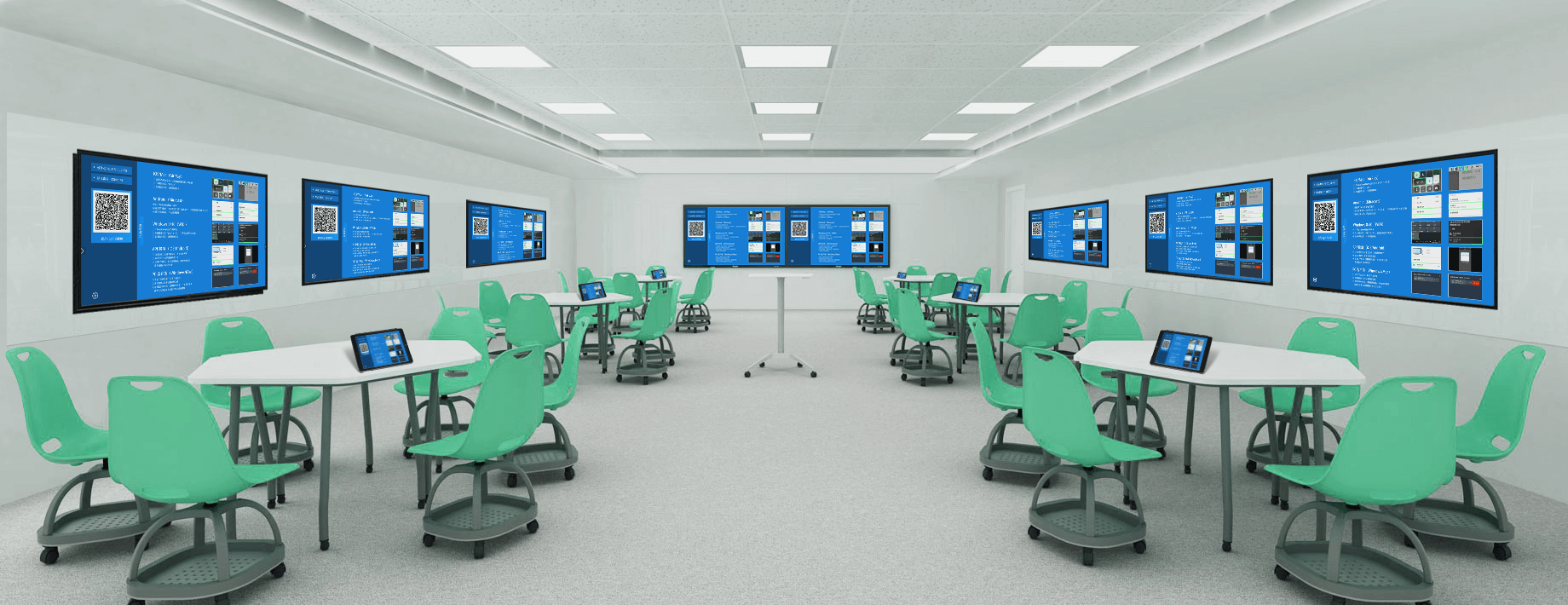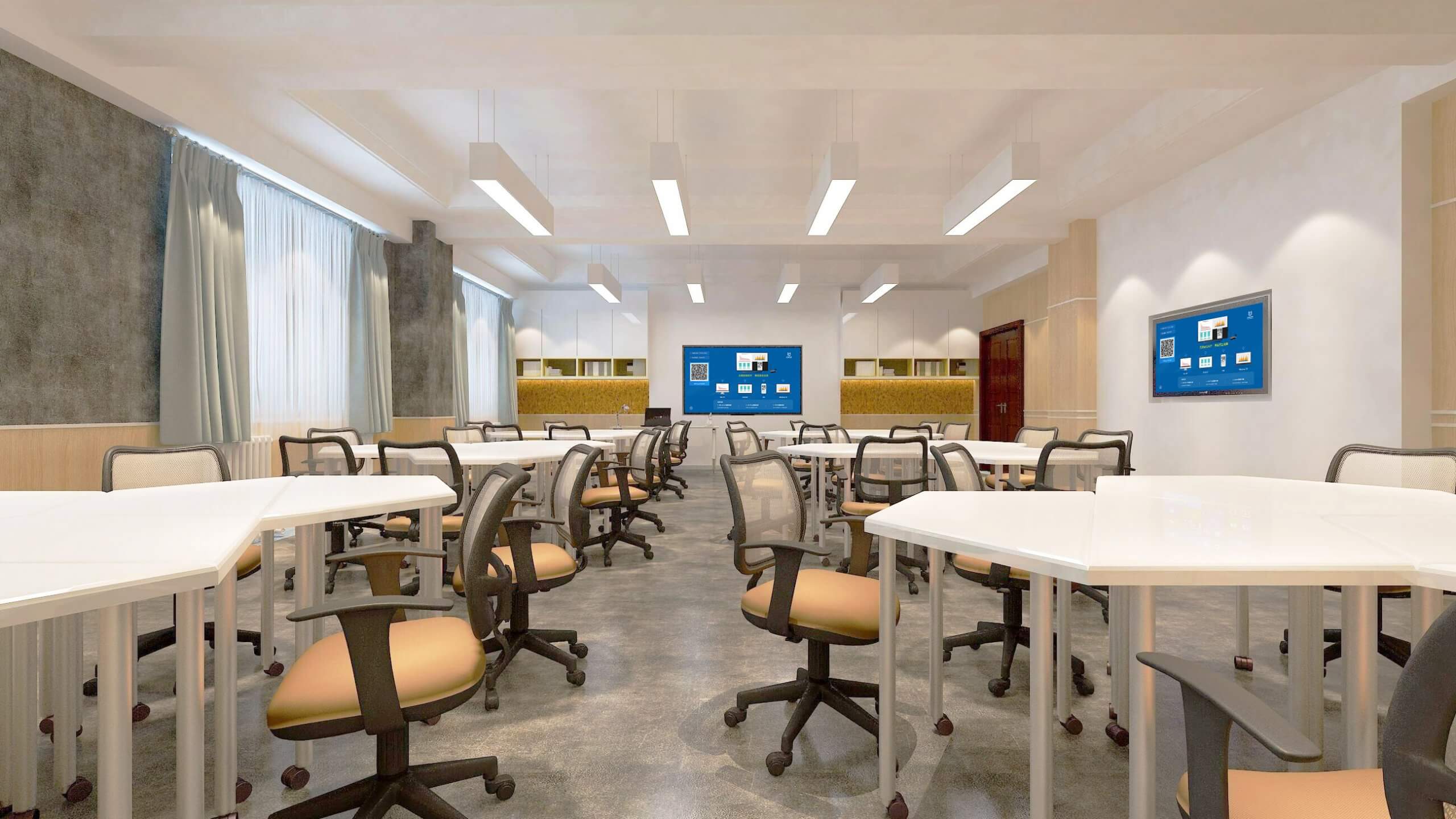What is an active learning classroom?
ALCs feature “round or curved tables with moveable seating that allow students to face each other and thus support small-group work. The tables are often paired with their own whiteboards for brainstorming and diagramming” (Baepler, et al., 2016). Some ALCs also feature multiple wireless displays, allowing instructors and students to project their laptops around the room, and some include microphones for sound projection. Wifi and power is critical for student laptops and smart phones. Note that ALCs are more or less flexible depending on the kind of furniture used.
Why are active learning classrooms useful?
In the STEM disciplines (science, technology, engineering, mathematics), active learning instruction, defined as practice that “engages students in the process of learning through activities and/or discussion in class, as opposed to passively listening to an expert,” is known to be more effective than traditional lecturing for student learning and student success (Freeman et al., 2014). The research is clear: If your instruction involves “continuous exposition by the teacher,” there’s a better way to teach. That’s true in the STEM disciplines, and it’s likely true in other fields, too, although there’s not as much research on active learning in, say, the humanities. Active learning classrooms are useful, then, because research shows that the affordances of ALCs facilitate adoption of active learning instruction, which leads to greater student learning (Whiteside, Brooks, & Walker, 2010; Baepler, Walker, & Driessen, 2014).
Consider the Whiteside study, which involved formal class observation of a biology faculty member teaching in an ALC and in a traditional classroom. The researchers found that, “despite the professor’s explicit attempts to conduct the same learning activities in both sections, he behaved quite differently in the two classrooms, lecturing significantly more in the traditional room and conducting discussion significantly more in the ALC…
The instructor also consulted (discreetly) with individual or small groups of students significantly more in the ALC than in the traditional classroom” (Whiteside et al., 2010). For instructors interested in practicing active learning instruction, an active learning classroom makes it easier to do so than a classroom set up for lecturing. Space matters.


